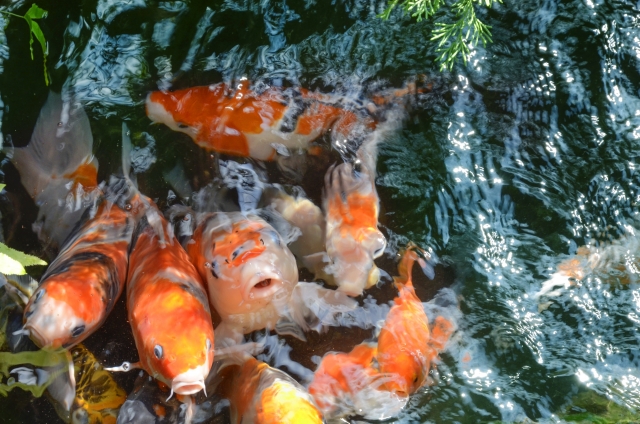<Hagi Reverberatory Furnace Remains 萩反射炉跡>
I’d like to write about modern history of Japan. Tokugawa Ieyasu opened Edo castle in 1603, since then peaceful and affluent Edo period (1603~1868) flourished for more than 200 years. In those days Japan conducted national isolation policy and international relations were cut off. Nagasaki Dejima was the only exception. And in 1853 American Navy commodore Perry came to Uraga port by combined fleet of black ships. Perry forced Japan to open the country fiercely and Tokugawa Shogunate gave in to the outer pressure. The door of Japan to outside was opened forcibly.
日本の近代史について書きたいと思う。徳川家康が1603年に江戸城をひらき、その後花開いた泰平の二百有余年続いた江戸時代(1603~1868)、日本は鎖国をして諸外国との関わりを断っていた。長崎の出島は唯一の例外である。そして1853年、アメリカ人ペリー提督が率いる黒船艦隊が浦賀港に来航し、開国を強力に迫ってきた。大きな外圧が江戸幕府にかかり、日本の外への門扉はこじ開けられることになる。
Tokugawa Ieyasu 徳川家康

https://en.wikipedia.org/wiki/Edo_period
https://ja.wikipedia.org/wiki/江戸時代
During the transition period from Edo (1603~1868) to modern Meiji (1868~1912) called Bakumatsu, large numbers of bloody fights were unfolded. Technically it was washing blood with blood. The battles between “ancient-value-supporters-honoring-emperor-while-rejecting-foreigners” versus “opening-the-country-supporters-willing-to-learn-from-the-West” were filled with drastic incidents. The theme is still very often featured in dramas, movies, and books. I learned this period by reading manga series of Sakamoto Ryoma. The end of Samurai and the climax of Bushido were there.
江戸 (1603~1868) から明治 (1868~1912) に移行する時代の幕末には、日本国内では文字通り血で血を洗う戦いが繰り広げられた。古くからの尊皇攘夷の価値観(天皇の権威を絶対的なものとし、開国を迫る外国人を排斥する思想)と、西欧列強より学ぶべしとする開国派との戦いは、数多くの劇的な事件に満ちており、今でもよくドラマや映画や本の題材となっている。私はこの時代のことを漫画「お〜い!竜馬」(武田鉄矢原作、小山ゆう作画)で読んだ。侍の終焉と武士道精神の極まりがそこにはある。
https://en.wikipedia.org/wiki/Bakumatsu
https://ja.wikipedia.org/wiki/幕末
In order to write this article of Japanese modern history, we visited Hagi Yamaguchi, the Sites of Japan’s Meiji Industrial Revolution that is UNESCO world heritage last year. I wanted to grasp the whole image of the period from Edo national isolation policy to Meiji Industrial Revolution that brought westernization to Japan. I wanted to learn the vast context and the footsteps of Japanese history.
日本の近代史における記事を書くために、ユネスコの世界遺産になっている明治日本の産業革命遺産を取材しようと、去年山口県の萩を訪れた。江戸時代の鎖国から明治の産業革命に至り文明開化をもたらした、大きな文脈の中に宿る物語とその筋道を理解しようと思ってのことだ。
Ebisugahana Shipyard Remains 恵美須ヶ鼻造船所跡

Hagi Castle Remains 萩城址

Remains of shipbuilding yards, steel plants, Shokasonjuku Academy that fostered key figures in the Meiji Restoration, iron mines, coal mines, reverberatory furnace, and etc, 23 component assets are recognized as one UNESCO world heritage that are crossing over 8 prefectures centering Kyushu and Yamaguchi. Especially, one of the most charismatic leaders, Yoshida Shoin who started Shokasonjuku Academy and had tragic death is enshrined and worshiped at Shoin Shrine.
造船所跡、製鉄所跡、維新の志士育成に貢献した松下村塾、鉄鉱山、炭鉱、反射炉跡など、九州山口を中心に8県に渡る23の構成資産全体が一つの世界遺産となっている。特に松下村塾を開いた吉田松陰は、幕末日本に余人をもって代え難い影響力をもたらしたのちに、悲劇的な最期を迎えた人物として、松陰神社で今も祀られている。
Shokasonjuku Academy 松下村塾


Shoin Shrine 松陰神社

Yoshida Shoin 吉田松陰

https://en.wikipedia.org/wiki/Yoshida_Shōin
https://ja.wikipedia.org/wiki/吉田松陰
In the time of mid 19th century called Bakumatsu, the Great Western Powers forced Japan to open up the country with massive military strength. To resist the outer pressure Japan enforced itself to build up modern nation, it is the pivotal point of the rise of Japan’s Meiji Industrial Revolution. It is the period of enhancing wealthy-country-and-strong-army that students learn in history class in junior high school and high school in Japan.
幕末と呼ばれる十九世紀半ば、それまで鎖国をしていた日本に対し、西欧列強が巨大な軍事力で開国を迫り、その圧力に抵抗するために近代的な国家を作ろうとしたのが日本の産業革命の原点である。この時代は、日本の中学や高校の歴史教科書で習う富国強兵の時代にあたる。
Japan is the first non-Western country that succeeded in industrialization with determination within only half a century and came to be recognized as a modernized nation in the world. However, as soon as Japan stood the same line with the Great Western Powers, it came to develop negative heritage by proceeding colonization policies forcefully and invading in China, Taiwan, Korea, and South East Asia. Dreadful World WarⅠand Ⅱwere awaited ahead.
日本は非西欧諸国で初めて意思を以ってわずか半世紀で産業化を成し遂げ、世界の舞台で近代国家として認知される国となった。しかし西欧列強に並ぶや、日本は中国や台湾や朝鮮や南方(東南アジア)へと侵略してゆき、植民地政策を強力に推し進め、凄惨なる二つの大戦へと突入して行ったという負の遺産も同時に抱えている。
Kaneko Mitsuharu (1895~1975) wrote travelogues of South East Asia as he wandered around witnessing and observing the influence of Japan to the regions in those days. The book is worth reading.
金子光晴 (1895~1975) が著した「マレー蘭印紀行」は、放浪する文芸作家の目から見た、当時の南方における日本の影響力を間近に観察したものとして、興味深い書物である。
It sure is something delightful that Japan enforced its national power and did’t become a colony of the West. However, when looking back the immense influence of Japan to Asian countries that is still powerful, the sway of the world history and international relations from Meiji period are deeply carved in. History is interesting and exciting, but at the same time history is cruel and savage. By all the reasons, we must humbly learn from the history.
日本が国力を強めて西欧の植民地にならなかったことは喜ばしいことではあるが、今に至る日本という国のアジア圏における強大な影響力を鑑みるとき、そこには明治期から続く世界史と国際関係の流れが深く刻みつけられている。歴史は興味深く私達の胸を熱くし、また同時に残忍で残虐でもある。私達は歴史から謙虚に学ばなければならないのだ。
Love and Peace to the world.
世界に平和と愛がありますように。
参考資料、文献
*「お〜い!竜馬」全23巻 原作 武田鉄矢 作画 小山ゆう 発行所 小学館
*「勝海舟と明治維新」 発行所 株式会社 学習研究社
*「世界遺産登録記念 明治日本の産業革命遺産」発行所 株式会社笠倉出版社
*「マレー蘭印紀行」 著者 金子光晴 発行所 中央公論新社
*世界遺産 明治日本の産業革命遺産 製鉄・鉄鋼、造船、石炭産業 (冊子)
発行 「明治日本の産業革命遺産」世界遺産協議会






















